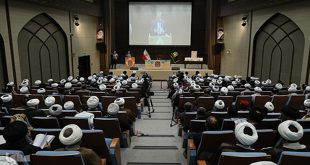This book focuses on four socially grounded fields of legal knowledge: fiqh, codification, individual waqf cases, and everyday waqf-related knowledge.
Standing in the mountains of western Yemen at the edge of a large rainwater harvesting cistern that I wanted to photograph, and breathing heavily from the climb, my host and informant said: “This cistern is not like the others we saw today, this one is waqf.” Then he was quiet for a moment, clearly thinking to himself, trying to figure something out. He finally said, “Actually, they are all waqf—they are made for the benefit of all Muslims.” In my MA thesis, I describe the use of rainwater harvesting cisterns and their role in local water management and the related system of ownership structure, but I never fully grasped the concept of waqf. At that time I had few informants educated in Islamic law who could explain the legal framework of waqf and I did not have the language skills to understand the texts of Islamic law. On several occasions, before I was able to investigate the topic of waqf in greater depth, I thought, what does it mean that that specific cistern was waqf? Or that they all were waqf? And what are the implications of that fact in the local society? Would that cistern be taken better care of compared to other cisterns because of its religious status as waqf? These basic questions are one of the foundations of this book. The institution of waqf (pl. awqāf) in Islamic law is in many ways similar to trusts, endowments or foundations in present day, western law. In premodern Muslim societies, infrastructure—and especially urban infrastructure—was to a large extent established and managed as public foundations, that is, waqf. This was not only the case for mosques, which are nowadays the main remnant of official, formal awqāf, but also for schools and scholarships for education, services for the poor and sick, the public water supply, community houses for the reception of officials and travellers, and halls for holding local celebrations and religious festivals.
As a thematic focus, this book concentrates on “non-mosque” public foundations in Yemen and most of the examples are related to the public water supply. Water supply serves as a typical example of the non-mosque related services that the institution of waqf was a vehicle for. Water supply is also a type of service, or public infrastructure central to both Yemeni and western development discourses and thus it is a shared, common focus that transcends the secular/religious divide or the divide between Islamic studies, history, and development studies. This book provides a legally oriented ethnographic description of a truly local mode of management of public resources—a local mode that should not be overlooked in the ongoing quest to find locally accepted legal and political vehicles for managing public, common good.
About the Author
Eirik Hovden, Ph.D. (2012), has worked on Yemeni history and ethnography with a focus on medieval and modern Zaydī history, Islamic law, endowments ( waqf) and local knowledge in water management.
Bibliographic Information
Title: Waqf in Zaydī Yemen: Legal Theory, Codification, and Local Practice
Author: Eirik Hovden
Publisher: BRILL
Language: English
Length: 426 pages
ISBN: 978-9004377721
Pub. Date: October 25, 2018

 Ijtihad Network Being Wise and Faithful Muslim in the Contemporary World
Ijtihad Network Being Wise and Faithful Muslim in the Contemporary World
